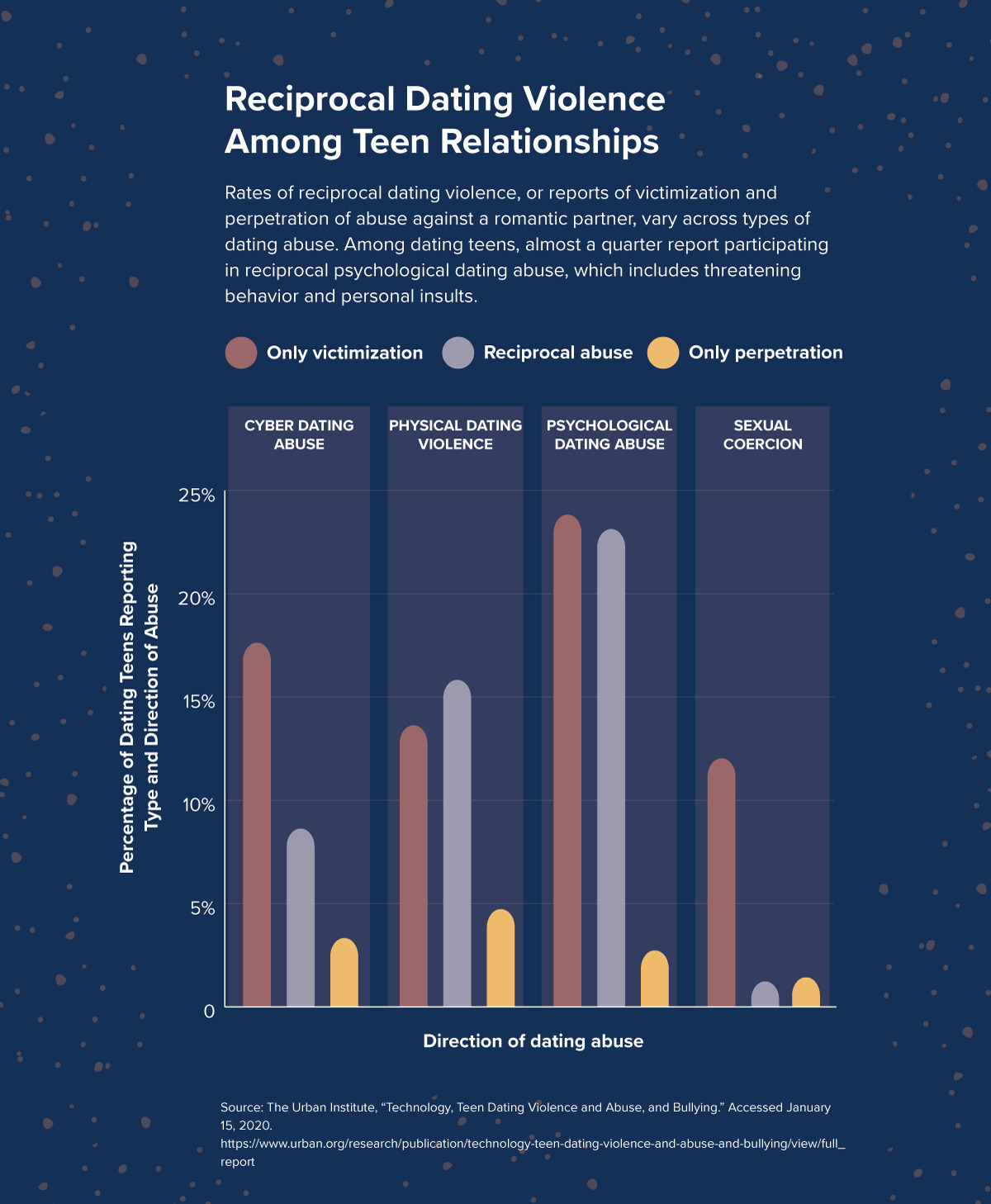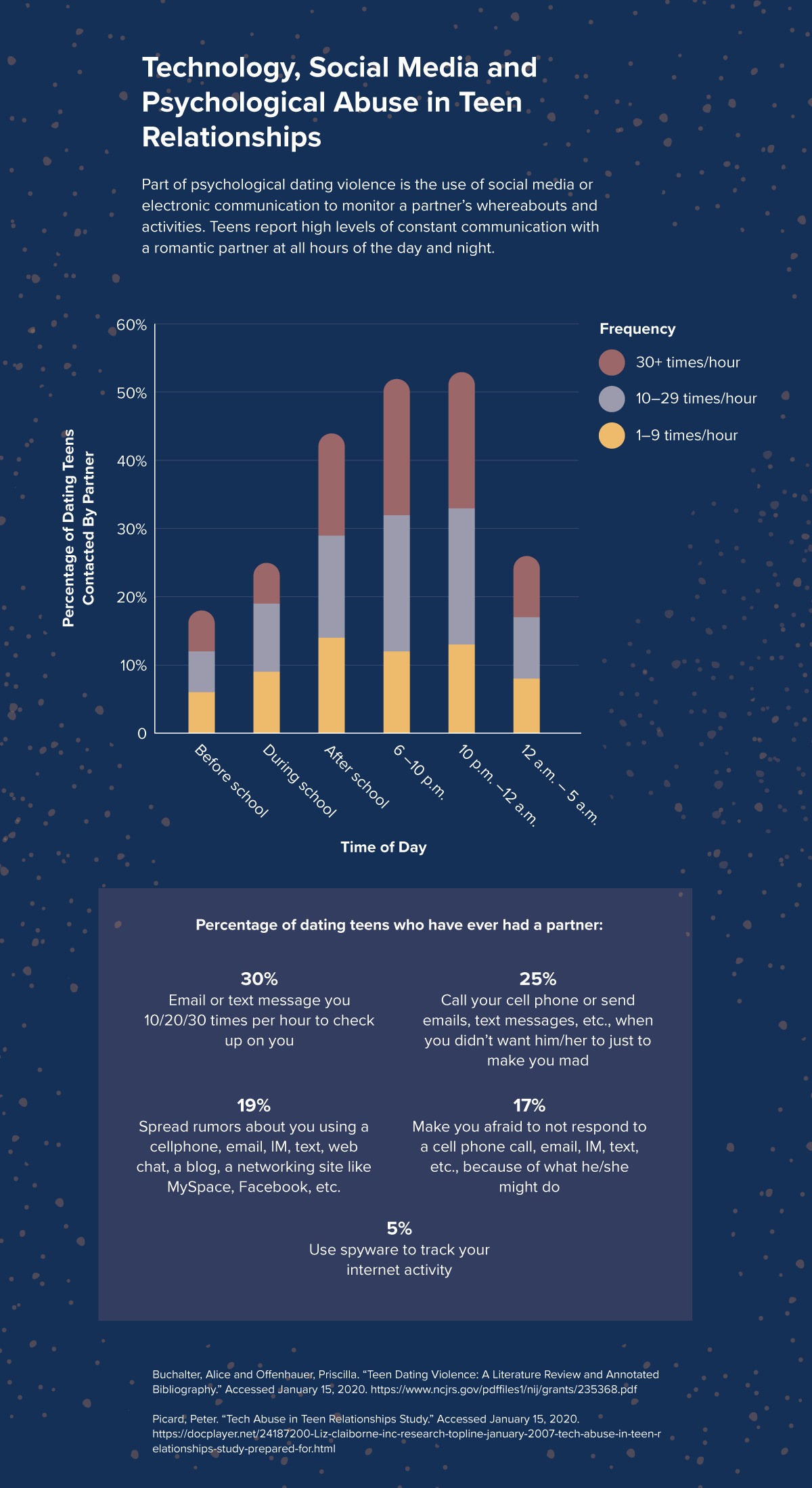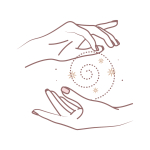Recognizing and Intervening in Emotionally Abusive Teenage Relationships

The line between romantic and unhealthy behavior is constantly blurred by television and movie portrayals. Actions telegraphed as adoring or lovingly persistent can actually be emotionally abusive and could make it more difficult for teenagers to recognize those tendencies in their own relationships.
Is the power imbalance between the lead and the contestants on The Bachelor unhealthy or just part of the innate structure of the show? In Twilight, Edward reads the minds of everyone surrounding Bella in order to know what she is up to: Is that stalking, or is it supernaturally aided adoration?
Even when television is explicit about the abuse, it does not make the character immune to romanticization. Penn Badgley, who plays the stalker and serial killer Joe in Netflix’s You, had to remind fans on Twitter that his character is a murderer, not an overly caring boyfriend.
When visible relationships romanticize unhealthy tendencies, how can teenagers learn to see the signs themselves?
This article is for informational purposes. If you are experiencing domestic or dating violence, please reach out to a professional, or call the National Domestic Violence Hotline at 1-800-799-SAFE (7233).
What Is Emotional Abuse?
Also called psychological abuse, emotional abuse is a form of intimate partner or teen dating violence (TDV). It includes verbal and non-verbal communication, as well as contact that takes place electronically. The common thread is that emotional abuse is done “with the intent to harm another person mentally or emotionally or exert control over another person,” according to the Centers for Disease Control and Prevention.
Examples of emotional abuse include:
- VERBAL ABUSE like name-calling, yelling, swearing and degradation
- GASLIGHTING, or manipulating someone into questioning their own feelings or sanity
- ISOLATION as a method of controlling other relationship
- HUMILIATION via public or private embarrassment
- INTIMIDATION OR THREATS of violence, the end of the relationship or something else
These kinds of abuse are common among adolescents—almost half of dating teenagers report experiencing psychological dating abuse in a 2013 report from The Urban Institute. While the same data show a difference between the percentage of boys and girls who are victims of emotional abuse (44% and 50%, respectively), the gap widens even more for teenagers in the LGBTQ community.
Approximately 59% of dating LGBTQ teens reported being the victim of psychological abuse, compared to 46% of those in heterosexual relationships. The CDC also reports that teenagers in sexual minority groups are disproportionately affected by all forms of dating violence.
How Is Emotional Abuse Different From Other Forms of Dating Violence?
Psychological abuse is the most likely form of TDV to be reciprocal—where both partners are perpetrators and victims.

But this type of dating violence rarely works in a vacuum. The Duluth Power and Control Wheel (PDF, 673 KB) was developed in conversation with women who were the victims of physical or sexual relationship violence.
The wheel highlights eight ways that the threat of physical violence can be maintained through other types of abuse. For example, emotionally abusive tactics like gaslighting or humiliation are tools for a physically violent partner to exert greater control over a person.
Other segments of the wheel show how intertwined different types of dating violence are. Isolation, coercion and blaming (which could all be considered additional examples of emotional or psychological abuse) each have their own section as common tactics used by physically violent partners.
How Do Technology and Social Media Facilitate Emotionally Abusive Relationships?
Cyber dating abuse is when relationship violence is conducted via the internet or electronic communication. Some examples include texting sexual photos to someone without their consent, using a partner’s social media account without their permission and spreading rumors about a partner on social media.
This kind of abuse most often overlaps with psychological abuse in teenage relationships. More than 80% of dating teens who are victims of cyber dating abuse also report being victims of psychological dating abuse, according to The Urban Institute’s survey.
Technology can play such an integral role in relationship violence that the Duluth Model includes a Tech Power and Control Wheel (PDF, 540 KB), outlining how physical abusers use technology to facilitate the original eight tactics.
Constant contact, the threat of sharing personal information and surveillance are all abusive tactics made easier by social media and technology.

Among dating teens, 30% have had a partner email or text them between 10 and 30 times an hour to check on them. One-quarter of dating teens had a partner make unwanted text or phone contact with the intent of making them upset. Almost 20% had a partner spread rumors about them using electronic communication or make them afraid not to respond. And 5% of dating teens had a partner use spyware to track their internet activity.
What Are the Signs of an Emotionally Abusive Relationship?
There is not a single experience that defines an emotionally abusive relationship. Instead, they exhibit behavior patterns that can look, feel and sound different depending on the people involved or the point in the relationship.
Below are some examples of common experiences for victims of emotional abuse.
What Can an Emotionally Abusive Relationship…



Look Like?
Frequent calls or texts to check in on your location or who you are with
Demanding access to your phone and social media accounts
Controlling what you wear, eat and do
Accusing you of flirting or cheating to get an apology
Ignoring or blocking attempts to communicate about issues
Sound Like?
“No one else will love you like I do.”
“It’s your fault that I have to keep an eye on you.”
“I don’t want you hanging out with those friends anymore.”
“You’re crazy—I never said any of that.”
“Nobody else needs to know anything about our relationship.”
Feel Like?
Constant fear of upsetting your partner
Pressure to always respond to messages and be available at all hours
Guilty for spending time away from a partner
Co-dependency on your partner or like the two of you can only rely on each other
Belittled by a partner’s insults or actions
Resources for Teenagers in an Emotionally Abusive Relationship and Their Loved Ones
I Am a Victim of Emotional Abuse
If you have a psychologically abusive partner, recognizing the signs and acting on the situation can be extremely difficult. One of the tactics of an abuser is to make you believe you have no choice but to stay, and it can become even harder when you have been isolated from loved ones.
Planned Parenthood’s first recommendation for victims of psychological abuse is to end the relationship with your abuser. Your safety is the most important factor, so take the necessary precautions. Talk to someone you trust for help if you feel unsafe, and end the relationship via text if you need physical distance. They also remind victims to give themselves grace—it is normal to miss and love an abusive partner—but continue to do what is best for you.
If you are not ready or able to end the relationship now, the National Domestic Violence Hotline has best practices. Create a safety plan to lower your risk of being hurt by your partner. You can also practice internet safety from partners who monitor your whereabouts or online activities by wiping your browser history, changing account passwords and checking for discreet GPS tracking apps on your phone.
Someone I Care About Is a Victim of Emotional Abuse
If you believe someone you love is a victim of TDV and emotional abuse, there are ways you can help them. First, talk to your friend about how they feel and to express your concerns. If you are worried that the situation is dangerous or needs intervention, ask a trusted adult for help, like a parent, guidance counselor or educator.
Planned Parenthood recommends that friends of emotional abuse victims mitigate harm in additional ways, such as refraining from tagging them in posts or photos on social media that could anger their partner. Other ways you can help include continuing to engage in fun activities with your friend.
Psychological abuse is complex and can be accompanied by codependency; remember to practice patience and empathy for a friend who continues to express love for an abusive partner.
Organizations and Tools for Additional Help
60 Digital Resources for Mental Health: Youth, Teens, School and College Students
A list of diagnostic tools, government organizations, nonprofits, phone hotlines and more devoted to addressing general mental illness as well as specific disorders.
Coercive Control Collective
A community of people and organizations that uses an intersectional approach to unmasking patterns of abuse related to highly controlling relationships.
Love Is Respect
A national resource to disrupt and prevent unhealthy relationships and intimate partner violence by empowering young people through inclusive and equitable education, support and resources.
National Domestic Violence Hotline
Highly-trained, expert advocates available to offer free, confidential, and compassionate support, crisis intervention information, education and referral services in over 200 languages.
Safe Place
A national youth outreach and prevention program for young people under the age of 18 in need of immediate help and safety. Safe Place designates businesses and organizations as Safe Place locations for youth across the country.
That’s Not Cool
A national public education initiative that partners with young people to help raise awareness and bring educational and organizing tools to communities to address dating violence, unhealthy relationships and digital abuse.
The Trevor Project
A national organization providing crisis intervention and suicide prevention services to lesbian, gay, bisexual, transgender, queer and questioning (LGBTQ) young people under 25.
The following section contains tabular data from the graphic in the post.
Reciprocal Violence and Abuse Among Teens in a Relationship
| Cyber dating abuse | Total (%) |
|---|---|
Only victimization | 17.6 |
Only perpetration | 3.3 |
Reciprocal abuse | 8.6 |
| Physical dating violence | Total (%) |
|---|---|
Only victimization | 13.6 |
Only perpetration | 4.7 |
Reciprocal abuse | 15.8 |
| Psychological dating abuse | Total (%) |
|---|---|
Only victimization | 23.8 |
Only perpetration | 2.7 |
Reciprocal abuse | 23.1 |
| Sexual Coercion | Total (%) |
|---|---|
Only victimization | 12 |
Only perpetration | 1.4 |
Reciprocal abuse | 1.2 |
Percentage of Dating Teens Contacted by Partner
| Time of Day | Percentage of Dating Teens Contacted by Partner | 1–9 times/hour | 10–29 times/hour | 30+ times/hour |
|---|---|---|---|---|
Before school | 18 | 6 | 6 | 6 |
During school | 25 | 9 | 10 | 6 |
After school | 49 | 14 | 20 | 15 |
6–10 p.m. | 50 | 12 | 18 | 20 |
10 p.m.–12 a.m. | 43 | 13 | 13 | 20 |
12 a.m.–5 a.m. | 24 | 8 | 8 | 9 |

